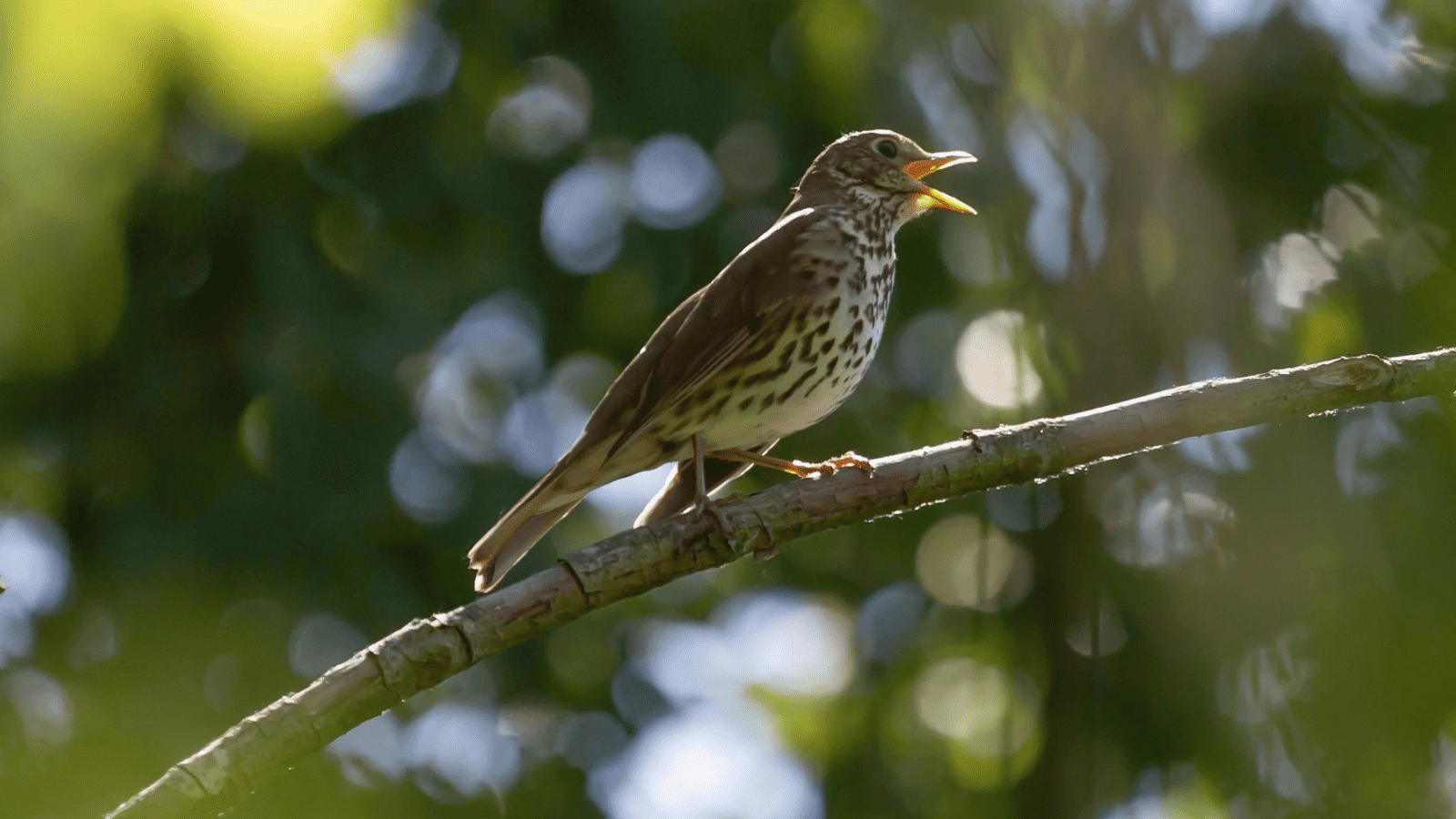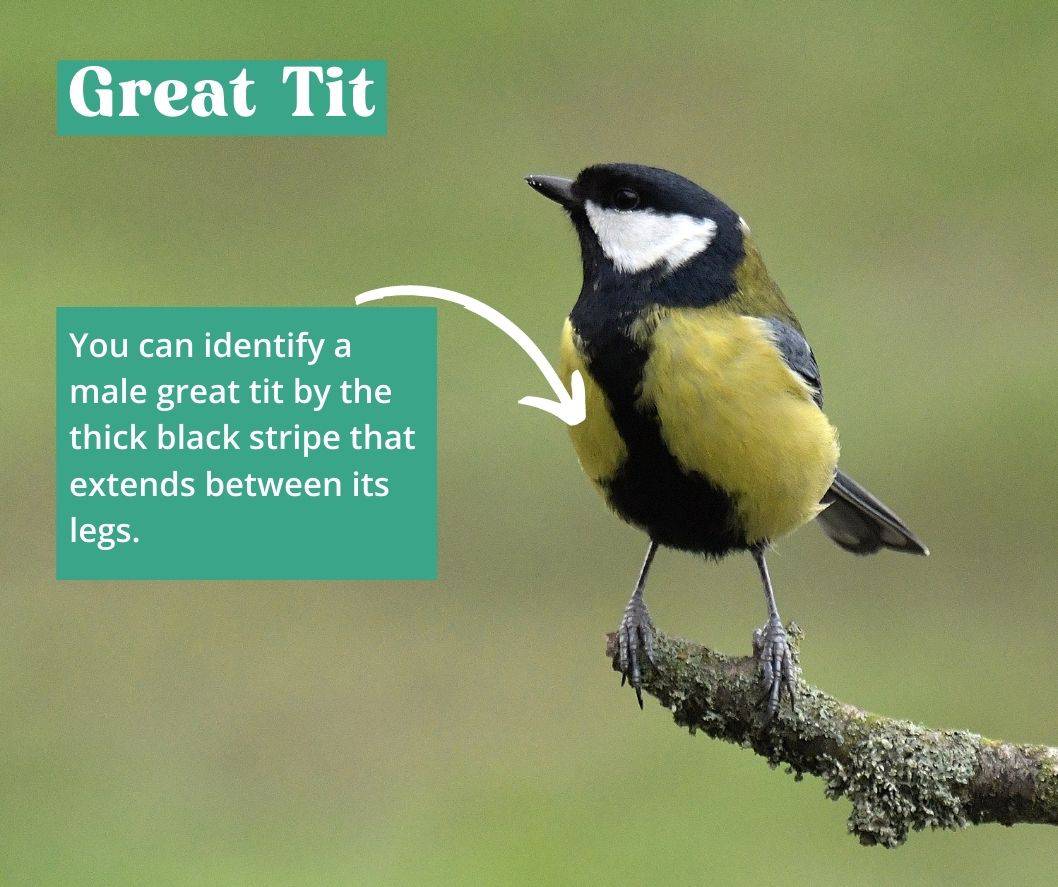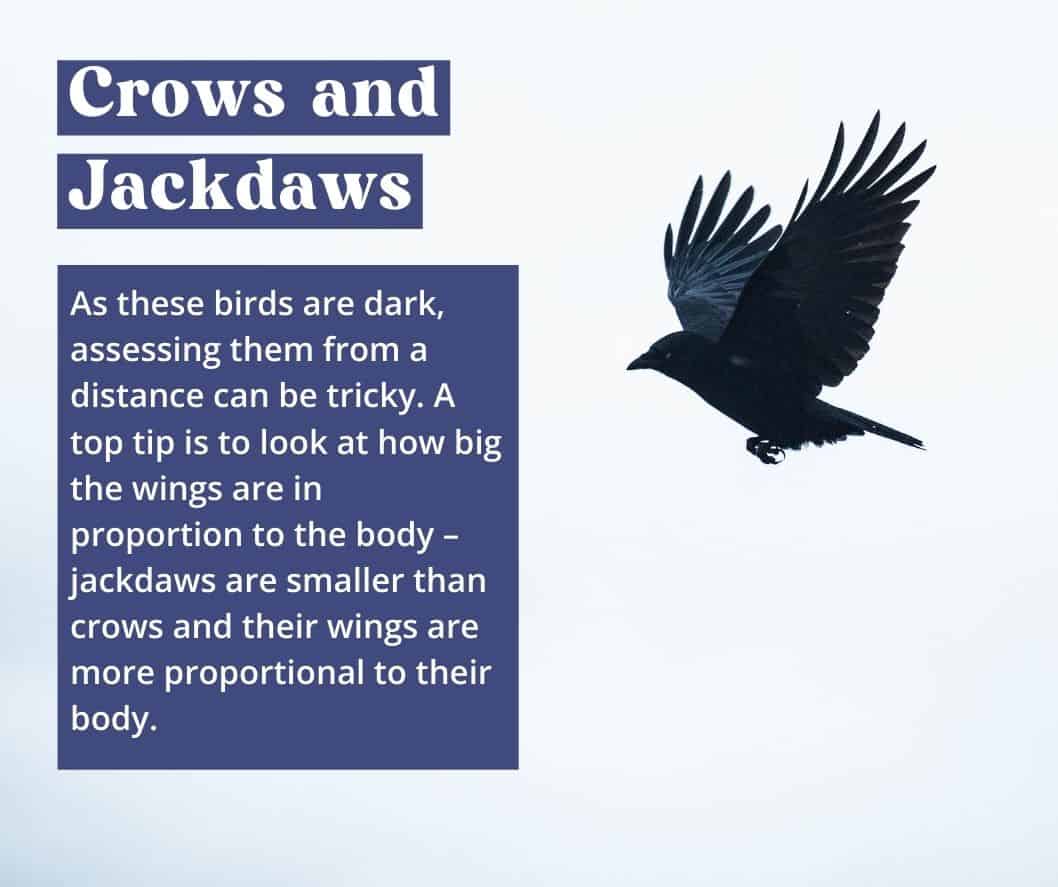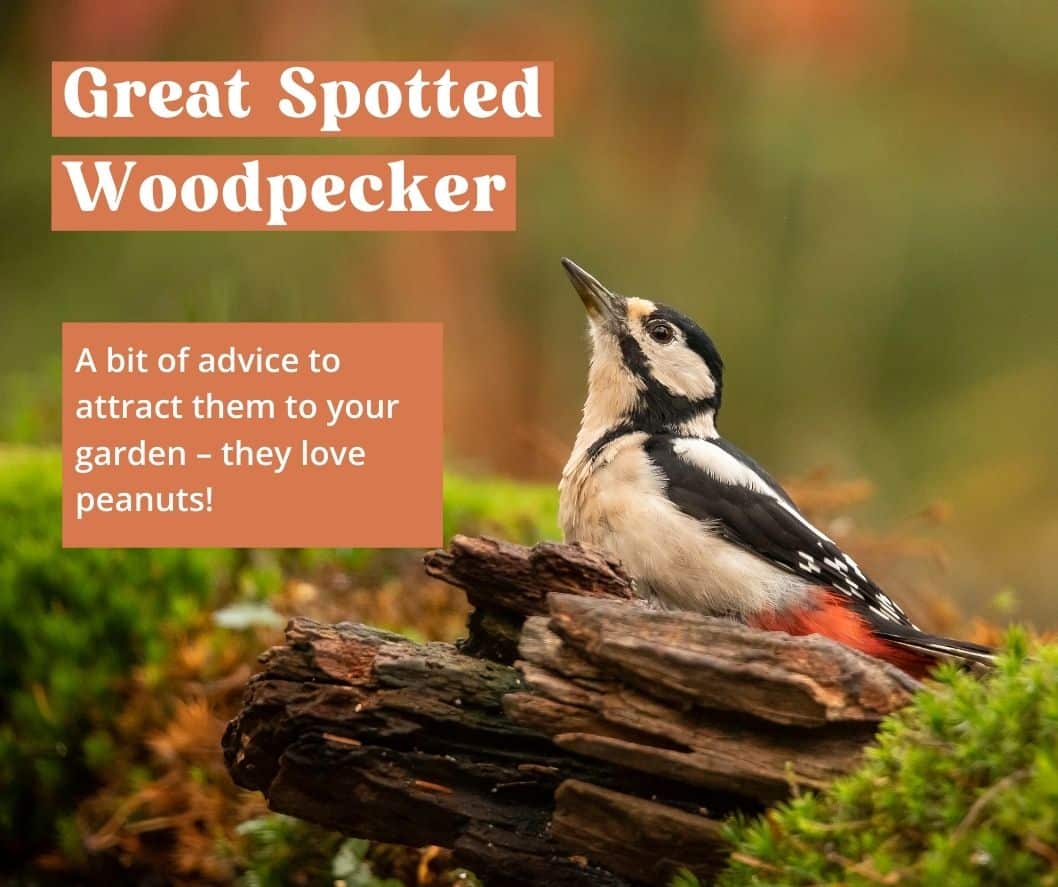Do you enjoy watching the birds in your garden, but wish you knew a little more about them, where they live, and what some of their calls mean?
Becky, one of our Biodiversity Learning Development Officers, attended our ‘Field Ecology of Garden Birds’ beginner course last year at Grow Wilder Bristol, one of the many fantastic locations where this course is held. This blog, written by Becky, gives you an insight into her day and the useful top tips she’s learnt along the way.
Grow Wilder is one of the Field Studies Council’s third-party course venues – by partnering with sites across the country, we ensure that you have an opportunity to learn about and connect with, the wildlife local to you. Grow Wilder is an oasis for nature on the outskirts of the bustling city of Bristol, with a mission to inspire people to take action to restore nature. Having an opportunity to engage with birdlife in an urban-yet-wild setting was incredible – it highlighted the wildlife that can be discovered on your doorstep and what experiences await, even on your walk to the local shop!
The day started in the classroom with our expert tutor, Sandy Hill. This hour provided us with a comprehensive background on all the questions a beginner birder wants to ask but is too afraid! We covered: where do birds come from? (evolution), and what exactly makes a bird a bird? (anatomy).
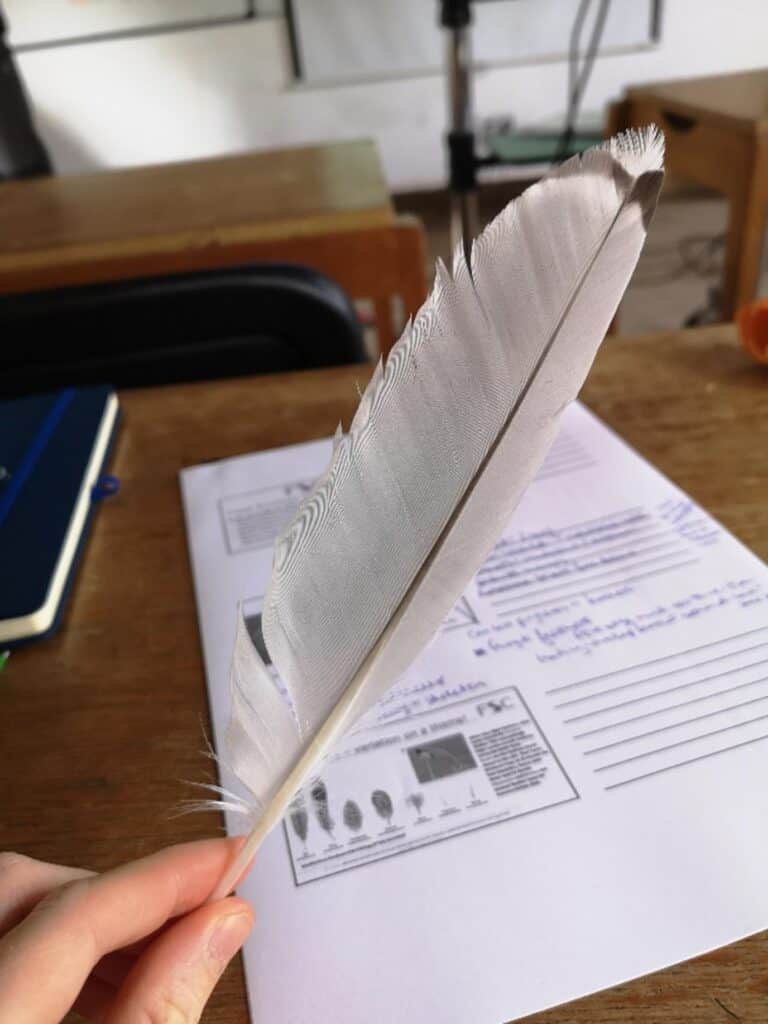
This second question provided the opportunity to handle some feather specimens that Sandy had brought in. We developed a real understanding of the multifaceted role that feathers play in the life of a bird and the associated terminology.
We also examined all the different ways that birds have evolved to occupy almost every corner of the Earth – the adaptations that make birds one of nature’s greatest success stories.
We then explored how life is “organised” using taxonomy, and how this is an essential tool for understanding the complex family tree of birds.
This was followed by a rather entertaining discussion on the origin of English bird names – these tended to originate from what people could infer about the species by using their senses. See how many you can think of that may fit into this category!
After this, we had a short break and then headed out into the field to observe the topic of our morning’s learnings in their natural habitat.
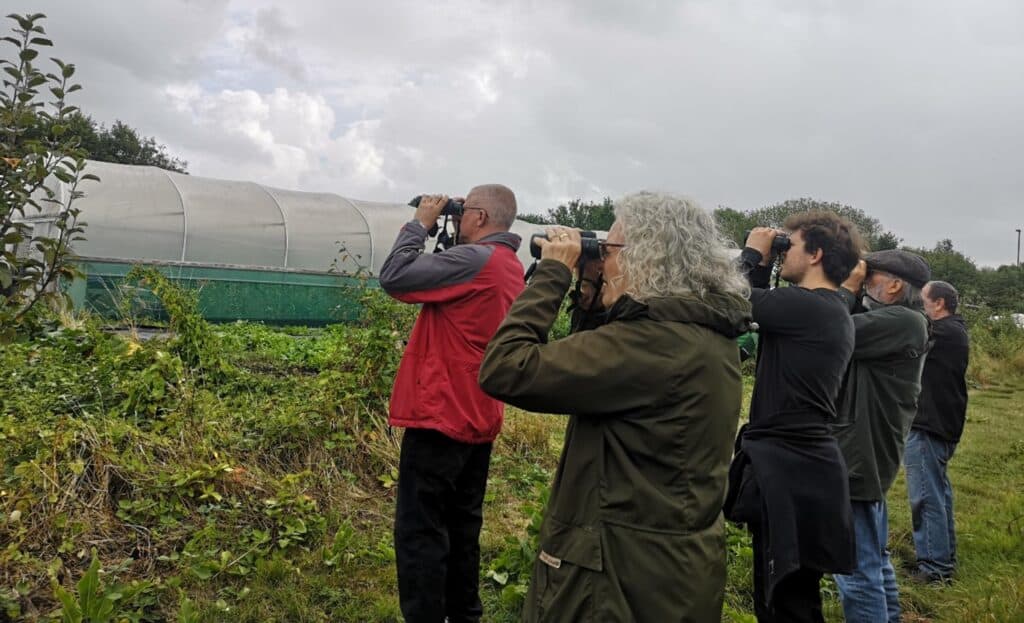
My top 3 learnings from this first field session were:
- Take it slow – bird watching is not a race, and you will quickly become frustrated if you treat it like one. Remember that it is not always about putting a name to a bird – it is mostly about experiencing what the field has to offer and honing your observation skills at first. Go easy on yourself and use patience and stillness.
- Think about environmental factors – e.g., What time of year is it? What are you likely to see? Is the lighting going to affect your ability to observe?
- Any green environment can be an opportunity to observe birds – challenge your perceptions about where you may be likely to encounter wildlife.
After the first field session, we returned to the classroom (nice and dry, luckily!) and delved into bird ecology – where birds live, what they eat, and how their life cycles vary.
The focus on the breeding season was particularly interesting, with Sandy spotlighting a few common species that differ in their approach to producing and rearing their next generation.

What followed this was a deep dive into tips for identifying birds out in the field, and the common, and less common, garden/urban species we were likely to encounter during our next field excursion. These were presented in size order to make identification easier out in the field.
We also covered bird morphology and associated terms as an aid to identification, with an opportunity to practice describing a specific bird with the support of Sandy and fellow participants.
This next field session was illuminated by the knowledge we had absorbed during the first half of the course, and now it was time to flex our newfound skills.
This time, we extended our ground covered to beyond the boundaries of Grow Wilder and along the banks of the river Frome. We saw lots of species covered in the classroom content, such as:
This is only a small example of what we saw out in the field, other species include a nuthatch, goldfinches (who were both ransacking a garden birdfeeder!), and a grey wagtail. What you observe will differ depending on course location, but many of these birds can be seen anywhere, we just need to remind ourselves to look.
We rounded off the day with a Q&A and informal quiz on identifying birds using ‘GISS’ (General Impression of Size and Shape). This was a fun way to see how far we had come, learn from one another, and get to pose any final questions to Sandy.
Ultimately, this course has enabled me to see so much more when I look at a bird – I see a complex life history, continuous adaptation, and behaviour unique to each species, deepening my experience of the birds around me every time I head outside my front door.
I now possess skills that make me more aware of my surroundings, and more likely to have special encounters with my local birdlife.
Opportunities to learn more
This course occurs throughout the year at different locations. The next chance to attend ‘Field Ecology of Garden Birds‘, is on the 22nd of October at Alyn Water Country Park, Wrexham.
If you are local to Bristol and fancy learning about birds at Grow Wilder, our next course there is ‘Practical Bird Field Skills‘ on the 24th of June.
We also have plenty of other opportunities to learn about garden birds which you can see here.
Plus, we have an online course with content and tuition from Sandy Hill. ‘Discovering Garden Birds‘ is a 4-week online course, which includes activities, assignments, live webinars, and more!
But if you can’t wait for the course, you can get started on your independent learning right away by purchasing some of our renowned field guides – click here to browse our Bird publications.

